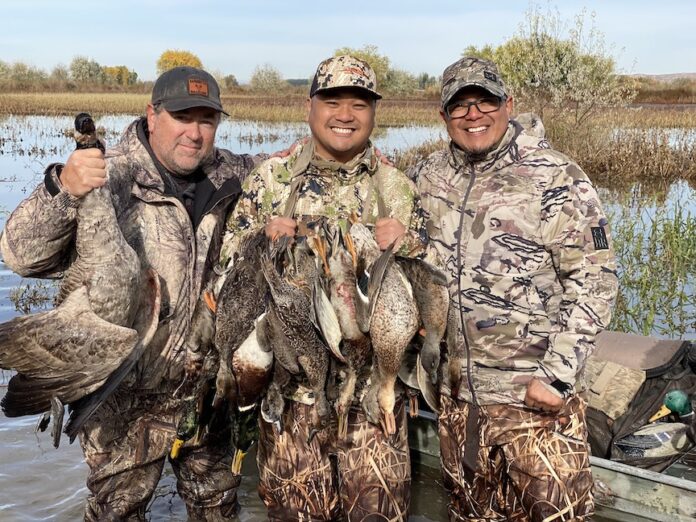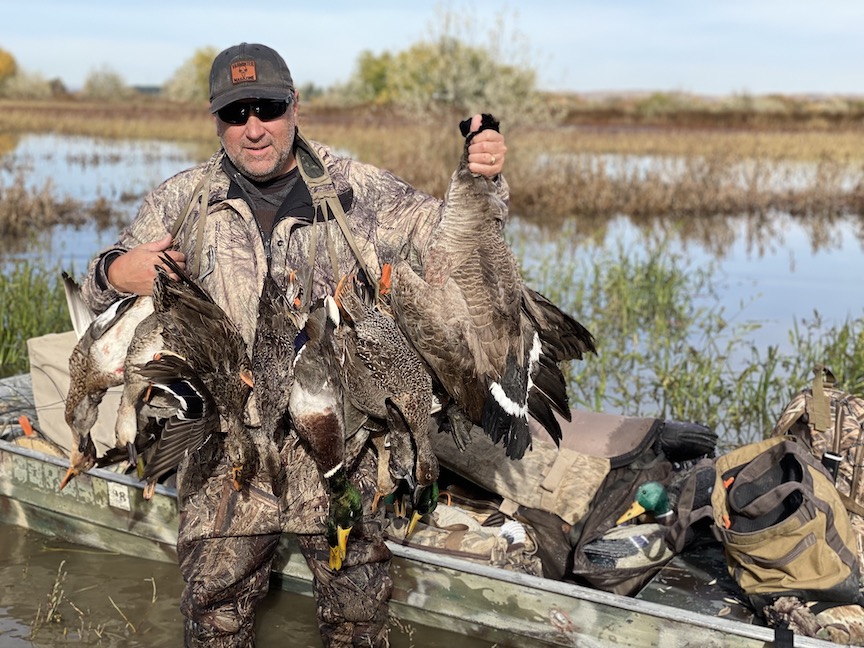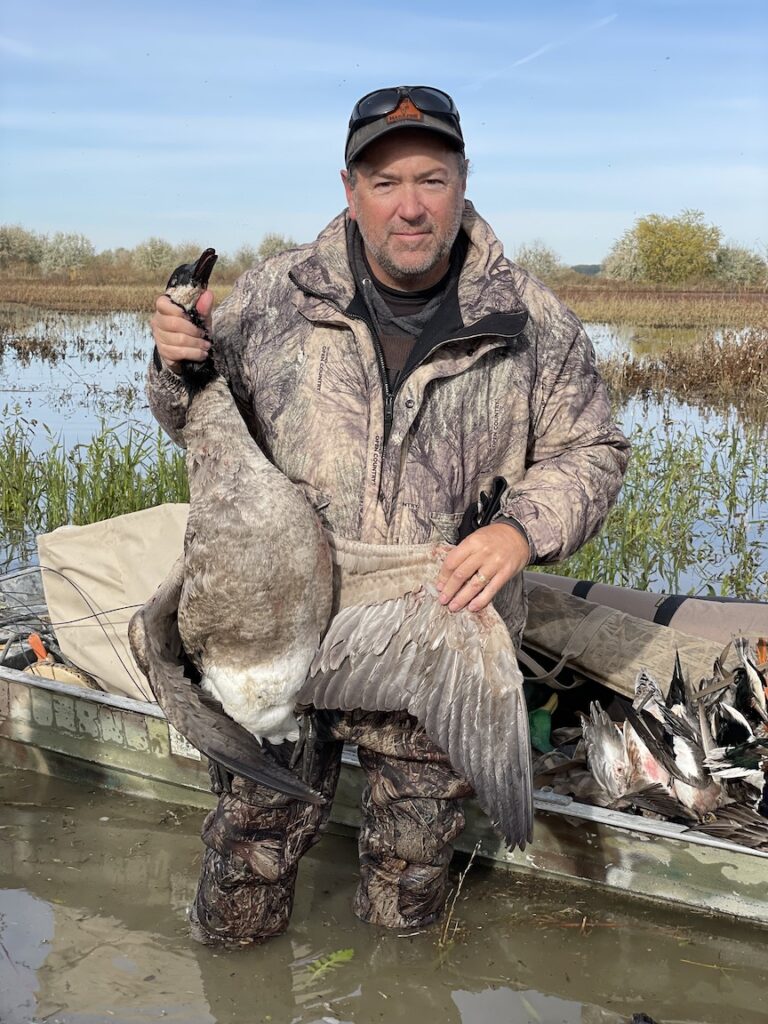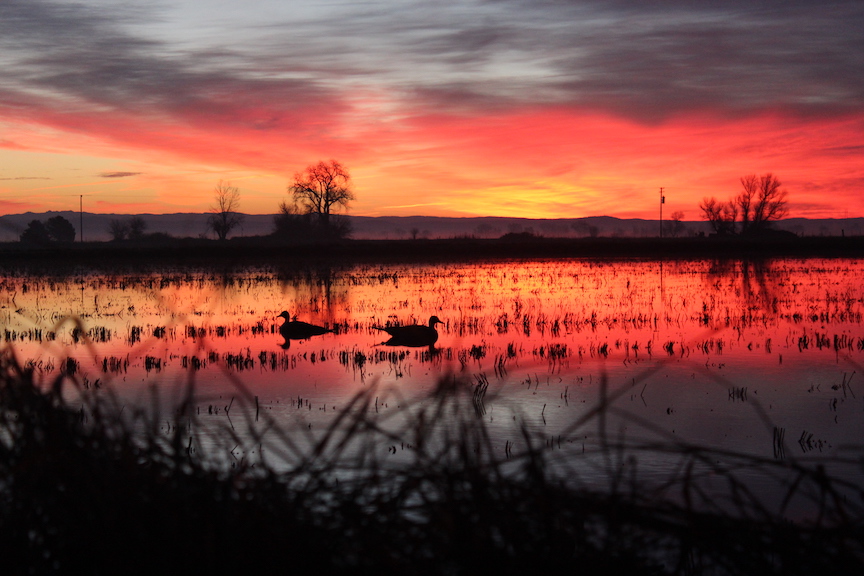
BY TIM E. HOVEY
If you’re a hunter, you can feel it in the air. The days are getting shorter, and the air temperature is finally cooling down a bit. We’ve suffered through the summer days and the fall season is finally on the horizon. It’s time to dust off that shotgun and start prepping for the waterfowl season.
I first got into waterfowl hunting back in the late 1990’s. After hunting ducks and geese all over California for fifteen years, I got out of it for a bit after I relocated. In 2020, after an invite from a friend, I decided to get back into chasing ducks, and I’m glad I did. Now, I find I have a whole new appreciation for hunting waterfowl.
Depending on which part of the state you’ll be hunting in, the opener dates are slightly different. Make sure you check the regulations in your area before you head out. For the majority of the state, the waterfowl season opens up on October 21 and extends through January 31. The daily bag limit is seven birds per hunter, with limitations on certain species. Again, check those regs before you start blowing on those calls.

Regularly harvesting waterfowl during the season has a lot to do with location. If you’re serious about duck hunting, you really need to get out a few weeks before the opener to scout for spots. Obviously, ducks and geese inhabit areas where water is present. However, this isn’t all they require to find a location favorable.
They feed on aquatic plants mainly, but one of the most popular crops planted just for waterfowl is corn. High levels of carbohydrates in corn gives ducks and geese a quick supply of energy for colder winter temperatures. A well-timed harvest of a corn field can draw waterfowl into feed. If ponded water is close by, ducks and geese will find this area attractive and will hold here during the fall.
My first waterfowl decoys were a hodge-podge of mismatched plastic birds that I had accumulated over the years. Most were either found, purchased at garage sales or given to me by a buddy. Regardless of what they looked like, they seemed to do the job. In fact, to this day, I have never purchased a brand new decoy for the season. Some are close to 25-years old and still bring birds close. In short, use what have and don’t spend too much on the latest and greatest.

We’ve always set our decoys up in either a U-shape or a W-shape, leaving open spots in front of the hunters for ducks to land. We’ve settled on about 20-25 plastic decoys, representing various species. Over the last few years, we’ve also added a rotational Mojo King Mallard decoy to the mix, adding movement to the set. If you’ve picked a good spot that holds waterfowl, you really don’t have to do much.
We do incorporate calling into the mix, but I’m not the best duck caller and I keep it to a minimum. Honestly, I turn more ducks with a whistle call I’ve used for years. Overall, we try and keep it simple.
Over the last decade, the ammo produced specifically for waterfowl has gotten increasingly complicated and insanely expensive. The most popular, non-lead materials used for waterfowl ammo today are steel, bismuth and tungsten, with steel usually being the cheapest option. Honestly, I have a few cases of 3-inch, number 2 steel shot specifically for ducks and geese, and have done just fine. I’m sure with the slightly heavier bismuth and tungsten options out there, you’ll extend your shot distance, but set up right, place your decoys correctly and ducks will come in closer than you think.
Last year I invited a couple of buddies out for a hunt on a parcel I had access to. One of those buddies, Duy Phan was a first-time

OPENING MORNING – After a hot summer, the anticipation of the opening morning of waterfowl season is something that most hunters look forward to. It’s time to hunt! TIM E. HOVEY PHOTO
waterfowler. He had never harvested a duck, let alone hunt from a nice duck blind.
We loaded all our gear in a small John boat and sloshed out to the blind, near the center of shallow pond. After unloading, Jose and I started tossing out decoys. We could hear ducks flying in the low light as we positioned our decoy set. Back in the blind, we waited.
It was decided that since Duy had never shot a duck before, he would get the first chance. A few minutes after shooting time, a pair of widgeon came into the decoys. They flared directly in front of the blind and Duy dropped the lead bird.
The rest of the morning was a blur of amazing duck action, great shooting, and a fun time with good friends. As the flight slowed down, a lone Canadien goose did a fly by and then circled back on my side. I raised my shotgun, lead the bird by two goose lengths and fired. The bonus goose folded in the air and landed thirty feet from our blind.
We ended up taking seventeen ducks of various species that day and the bonus goose. It was one of the best waterfowl hunts I had ever experienced.
Waterfowl hunting is a great way to get new hunters into hunting. It’s also a great way to spend the morning with good friends. Spend a little time before the season looking for areas that hold ducks and find a suitable place to set up. Put the sun at your back, shoot straight and good luck. The season is here! It’s time to hunt!



